Decorating the arch with decorative stone
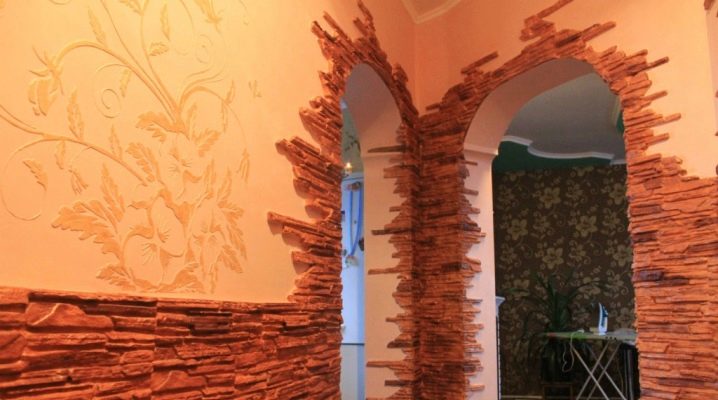
Decorative stone is one of the most suitable materials for surface finishing both indoors and outdoors. Due to its functional and aesthetic advantages, it is increasingly used for the design of a variety of arches.
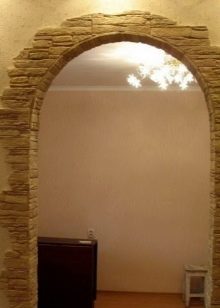
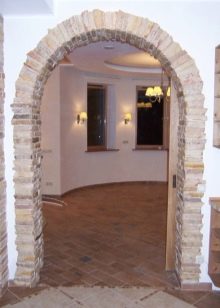
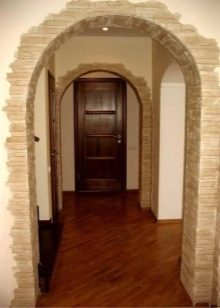
Peculiarities
An arch is the architectural element with which a small area can be visually made larger, and a spacious one can be effectively zoned. A well-decorated passageway saves and visually expands the room, functionally separates adjacent rooms and at the same time forms a single interior, creating the desired atmosphere in an apartment or house. Most often, arches are made from drywall, and then revetted with the selected material.
There are many options for processing openings in an apartment: using plaster, wood, forged elements and, of course, stones: sandstone, shell rock, granite or marble. However, durable natural stone has a high cost, so today its artificial substitutes are increasingly being chosen.
This happens for many reasons:
- Decorating the arch with decorative stone will cost you much less.
- Using this material, you can simulate the drawing of any rock.
- The weight of such a decor will be much less, which can also be a plus - by no means any wall is able to withstand the weight of a real stone.
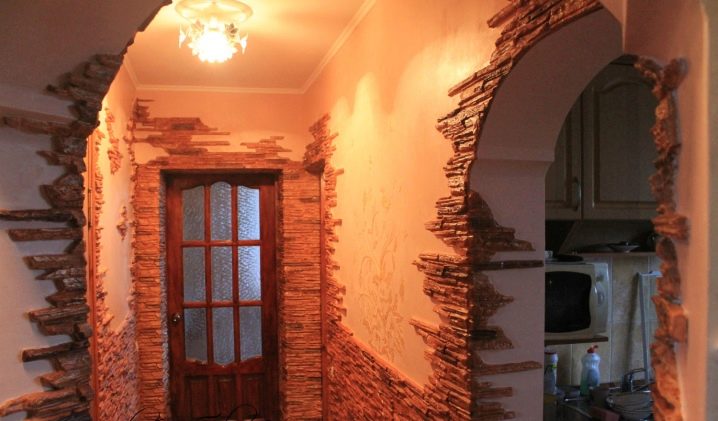
The decorated entrance to the hallway has both an aesthetic and a practical function. It is here that the owners, guests, and their pets most often move, which means that the passage is heavily polluted. The decorative finish is less dirty and easy to clean, and dirt is not visible on its surface. Of course, she also immediately attracts the eye.
Since the decoration with decorative stone is able to repeat the pattern of any natural breed, you are able to arrange interior doors in a similar way - it is easy to choose a variation that suits a specific interior. In most cases, the choice is made in favor of imitation of brick, small pebbles, marble or granite.
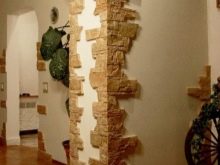
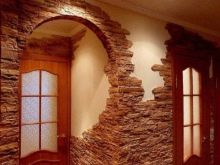
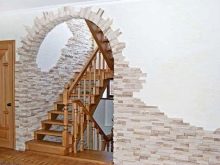
Design options
The process of laying decorative stone is quite simple, so you can arrange any arch with your own hands.
Traditionally, the laid out stones form a side strip around the arch, but in some cases the decision is made to decorate the entire wall. Such decoration with decorative rocks is used not only for doorways, but also for facing windows, niches and built-in furniture. If in a city apartment you have a free niche, then turn it into an arched false fireplace and put a few burning candles there.

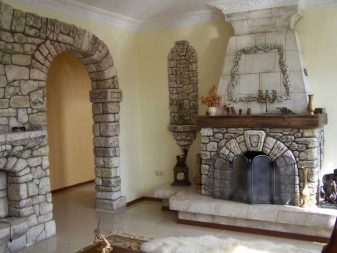
A composition of several arches located in one space will look very stylish.
Arched openings decorated with artificial stone can, on the one hand, harmonizing with the color of the walls, not focus on themselves and act as a background for bright furniture, but, on the other hand, become a center of attraction and a bright design solution. In the event that an arch connects two rooms in dissimilar styles, decorate it on one side only.
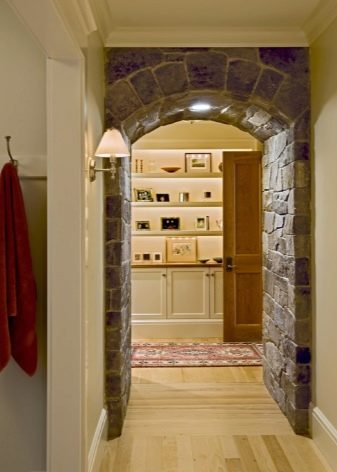

Arches made of artificial stone come in different geometric configurations:
- classic - straight sidewalls and arched top. Usually, they are used for completely dissimilar styles, since the design fits organically into any interior;
- ellipsoidal - with an arc in the form of a regular or irregular oval;


- rectangular or portal - the side and top parts form a right angle;
- round - they look curious in combination with bright, colorful walls. Usually they are preferred by owners of futuristic interiors;
- curly - the sides form smooth lines and thereby violate the perpendicularity in relation to the floor.
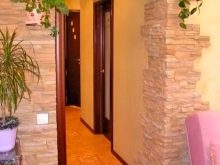
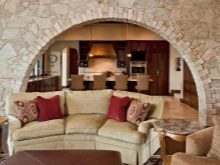
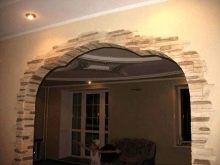
The shape of the arch depends on the size of the opening and the height of the ceiling, the function of the room and its design.
The cladding pattern is symmetrical and non-symmetrical. Arched openings, trimmed according to the technology of "torn stone", do not have symmetry, but they look non-standard and complement the premises with an original layout. A symmetrically lined arch with stones to match the wall looks better in classic, calm interiors. Combine a variety of shades of the same color and alternate vertical and horizontal tiles.
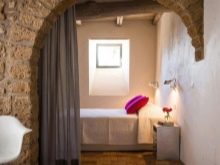
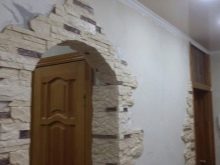
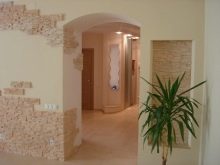
Openings are divided into passive and active. The former act as a simple border, while the latter, which are distinguished by an unusual shape, are themselves an interior decoration. The simple passive includes such types as classic, modern (with a pronounced rise), romance (the arc is rounded at the sides, but cut off at the top) and others. Complex active ones are oriental, horseshoe-shaped, trapezoidal, lancet and others. They have jagged edges and are sometimes located on several levels.
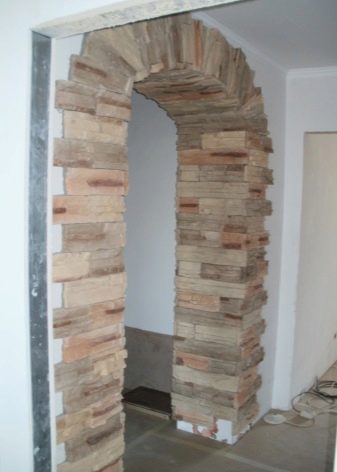

There are also two ways of laying artificial stone: seamless and preserving the seams. In living quarters, the seams are usually preserved, as this gives the arch a special zest. They are made wide enough, and then filled with grout of the required shade.
Often, the design of an arched opening is complemented by the creation of correct lighting and decoration with plant elements. The choice of lamps depends on the style of the arch: there are built-in and inconspicuous models, fanciful sconces, or bright LED backlights.
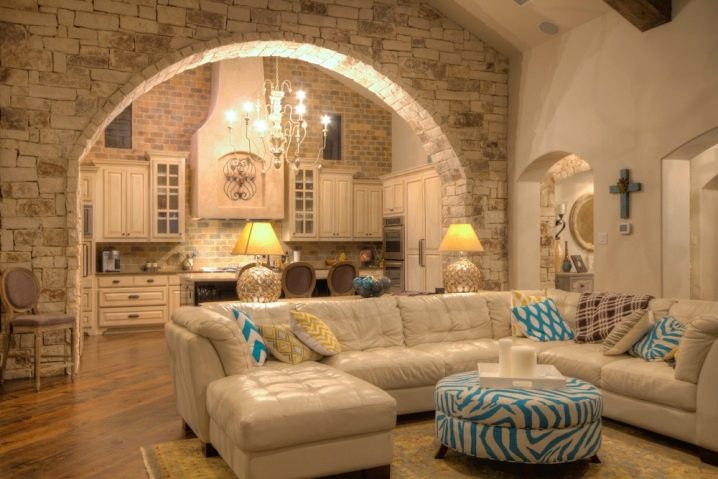
With the help of light, the expected mood is given: mystical, solemn and upbeat, calm and relaxed, or neutral.
Choice of materials
Decorative stone is created from natural components: expanded clay, cement and pumice with the addition of a special mineral pigment to give color. Such material is considered environmentally friendly and safe - it is not afraid of corrosion, rotting and fungal diseases. Upon completion of the drying and firing processes, it receives a durability that is in no way inferior to the original.

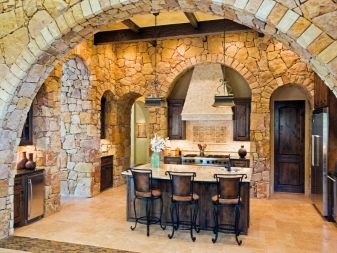
Decorative stone is resistant to very high and low temperatures, therefore it is often used for cladding fireplaces and exterior walls of the house. It is also used in rooms with high humidity: swimming pools, bathrooms and others. It should be added that an arch made of such a material is easy to clean and dry with conventional means.
Currently, it is possible to choose a decorative stone that imitates any natural, not only in color, but also in texture. Therefore, the choice of materials should depend solely on the design of the room.
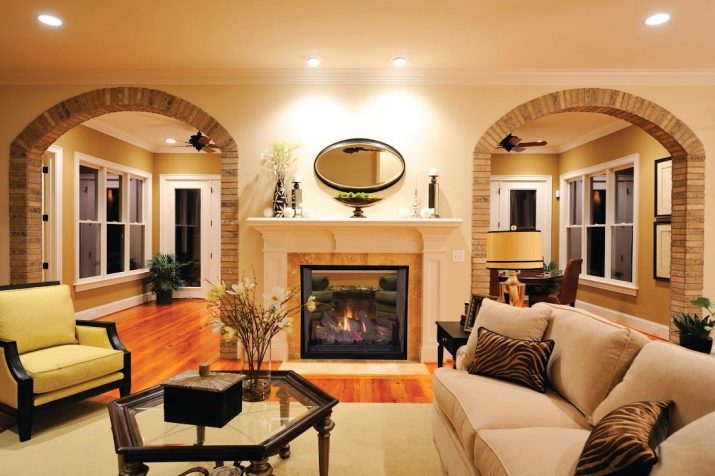

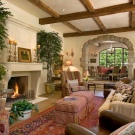

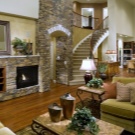
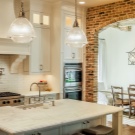
The tiles are sold in flat slabs of varying thicknesses and sizes. There is also a corner option that helps to decorate the upper part of the arch without any problems. But it should be selected very carefully, after completing all the calculations.
The most popular are imitations of shell rock, granite, slate, marble and travertine. The surface is smooth, or resembles a rough and rough stone. The base of the decor is made of acrylic, quartzite, or with a base of plaster, alabaster or a mixture of cement and sand.
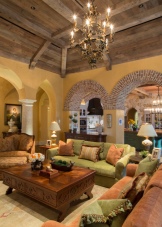
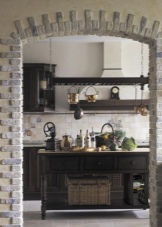
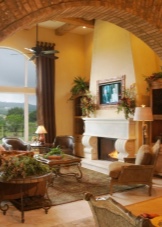
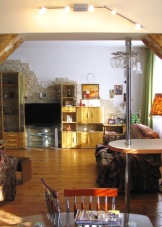
If the arch itself is made of plasterboard, then choose a flexible, lightweight acrylic material, or plaster tiles. A brick arch can be decorated with stones on sand-cement mortar. In addition, try to choose a narrow tile - it is easier to mount it on a semicircular part of the opening. The cost of such material depends on the country of origin, firm, quality, weight and even patterns on the stone.
The installation process is quick and easy. You do not have to purchase additional mounts and involve craftsmen. But, in any case, before starting finishing work, it is necessary to check all the stones.
First you need to prepare the material:
- Open the packages and mix the parts.
- See how they will look the most advantageous. Combine them, according to shades, and long with short - the arch should look natural.
- Turn the pieces over to the back to check for a foamy layer that will make the tile less sticky. If there is one, clean it using a metal brush.
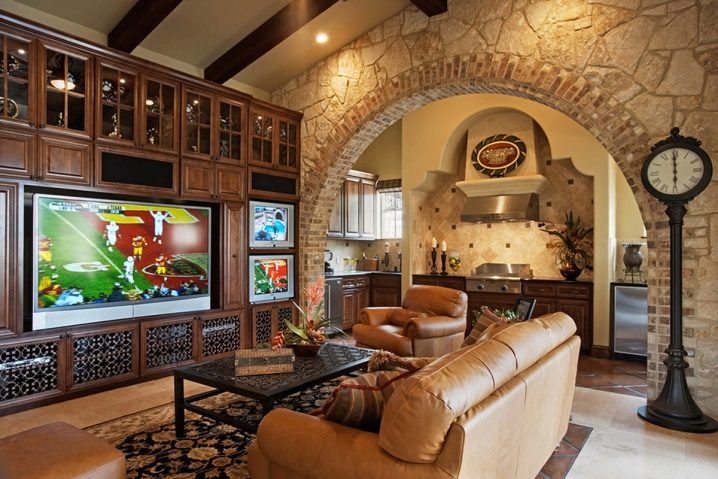
What else do you need?
To decorate the arch, you will need at least the following tools: what you will use to cut a stone (a hand saw or a grinder), a construction knife, a level, a hammer, sandpaper, a chisel, and glue.
The step-by-step process of cladding looks like this:
- Cut the decorative stone into several pieces or thin tiles. Prepare the surface of the arch in advance by removing dust and dirt, old wallpaper, paint and whitewash. Make a few notches to help the glue stick better. You can also apply a primer, after which it is important to dry the structure.
- Having prepared "liquid nails", grout or some other adhesive, start gluing the tiles from the bottom of the arch, from its junction with the floor. Pay attention to the weight of the stone - some brands are not able to withstand heavy samples. Apply the adhesive to the wall with a putty knife and press the stones more tightly, but do not overdo it, otherwise cracks will appear. Leave a 5 millimeter gap between them. Keep in mind that the adhesion will be higher if the tile contains the same ingredient as the surface to which it is glued.


- Work through a row on both sides of the arch, and then move on to the next. Line up each using a level and use plastic crosses. If there are corner stones, then use them to form the corners. If there are none, then lay flat overlapping - this way you will give stability to the structure.
- After that, start rounding. At this stage, you need to cut the stone yourself to give it the desired shape using a grinder, construction knife or nippers. Use emery paper and a file to handle unevenness. Partially lay the stone on a nearby wall surface.
- After a couple of days, when everything is dry and set, start filling the tile joints with cement mortar or grout. You can choose any color of grout, depending on the design of the room. Avoid getting liquid on the surface of the stone, remove the excess immediately with a soft cloth. After the arch is completely dry, cover it with acrylic varnish or even paint it. Small errors are hidden with an airbrush.
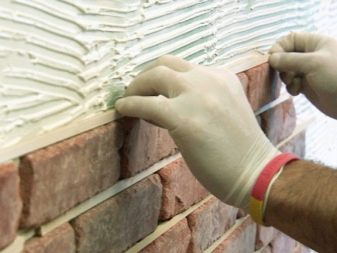
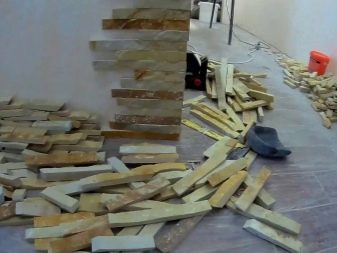
You will learn more information on how to make a stone arch in the interior from the following video.
Original examples of decor in the interior
Using imitation stone on the arch of the door, you can decorate the space in absolutely different styles, in accordance with your own desires. But it is worth remembering that for a harmonious design you will need additional decoration of the space: the use of correctly selected lamps, plants, pieces of furniture, paintings and other elements.
- For example, with the help of decorative granite it will turn out to make an entrance to an old castle or a stone cave.
- If you paste over the arch with light green tiles and add plants, then a semblance of an entrance to an underwater cave will appear.
- By combining wallpaper with nature and masonry, you will create a panorama of ancient ruins and the landscape behind them.
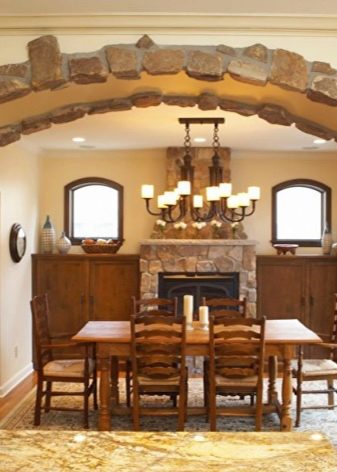

- A square arch and a fireplace decorated in the same style form a harmonious pair that sets the mood for the room and gives it a special comfort.
- When decorating a nursery, you can style the arch like a dragon's head using stones with the appropriate color and texture, as well as lighting.
- Tiles that resemble sand in color will help give the room a nautical theme.
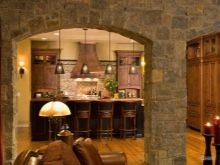
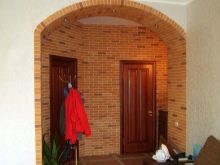
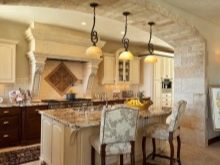
- For rooms where celebrations, holidays and feasts are often organized, light tiles imitating marble are suitable.
- The arches in the corridors are decorated with materials in dark shades.
- Red, gray or brown stone under the old brick in the doorway will be a great addition to a loft or country-style room.
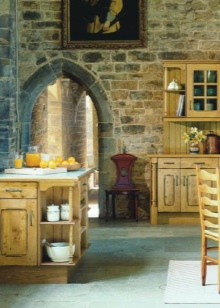
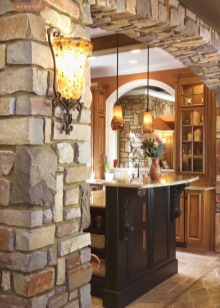

- When decorating a room in Provence style, give preference to light bricks.
- Empire style arches are usually complemented by columns with decorative elements.
- For classic interiors, choose polished marble and keep the shape of the opening smooth and flowing.
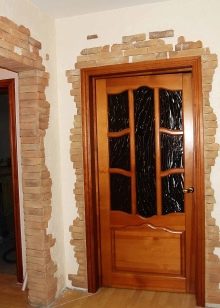
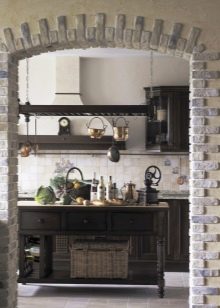
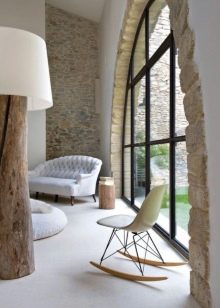













The comment was sent successfully.